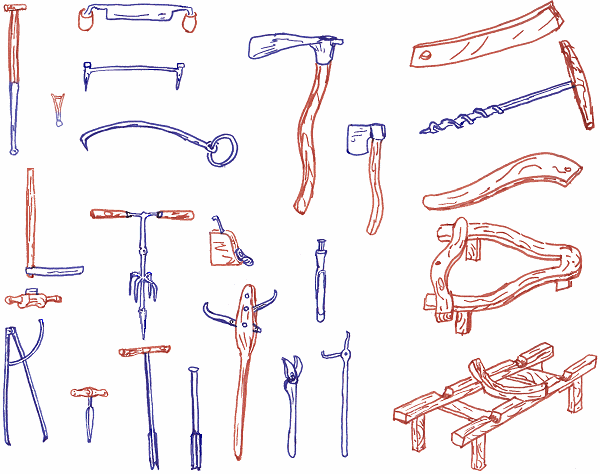

| Wheelwrights and carpenters overlapped in skills and in existing in the villages. A wheelwright had to co-operate with a blacksmith in making the complicated wheel, and sometimes they were located close by or together - even in the same business. The wheelwright had to know about wood (he selected the trees to be felled, he examined the wood for its best use - e.g. strong oak for spokes, elm for flexibility) and about vehicles and their stresses of use. He stored timber. |
| The decline of the horse in farming and in horse pulled traffic has meant many a wheelwright disappearing and his skilled craft. He has been uncoupled from the blacksmith. Restoration of vintage vehicles and sometimes the like of gipsy wagons create some demand. Many adapted themselves to motor vehicles as they became more common. |
| Smedley, N. (1977), East Anglian Crafts, London: B. T. Batsford, images drawn from originals at 23 and 26, text at 22-23. |